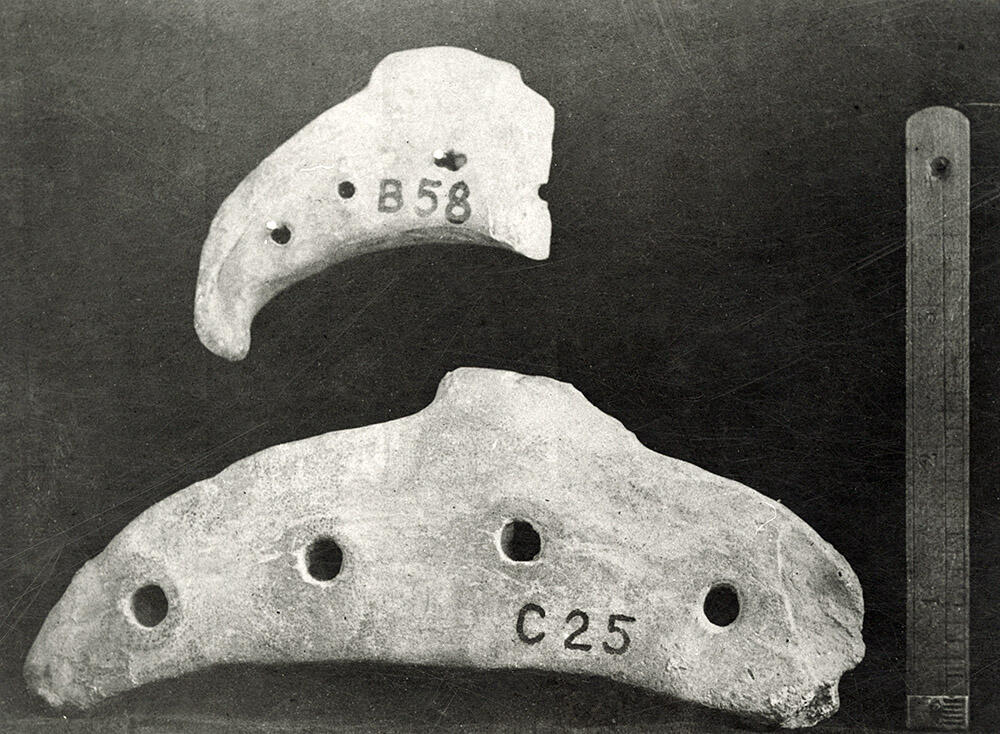Another class of objects, even if incomplete, were also immediately familiar to Day Ram Sahni:
"(16) An earthen instrument for making twines. It is a curved shaped piece with five holes, one of which is broken off. Each hole received a strand, all five of which combined into the completed twine. The exact purpose of this piece is, however, uncertain. (No. C 25.) I have recently noticed a similar object among the Central Asian antiquities deposited in the Indian Museum, Calcutta."
- Daya Ram Sahni, Annual Progress Report of the Archaeological Survey [of India], Hindu and Buddhist Monuments, Northern Circle for the Year Ending 31st March 1921, p. 13.
"These curved terracotta objects are actually the sides of toy oxcarts that were connected together with small wooden rods. The projection at the top has two holes that allow for an axle with two wheels to be attached to the cart. For more discussion see Kenoyer J. M. 2009. Carts and wheeled vehicles of the Indus Civilization: New evidence from Harappa, Pakistan. Pages 1-34 in T. Osada & Uesugi A. (eds.), Linguistics, Archaeology and the Human Past, Occasional Paper 9. Kyoto: RIHN."
- Jonathan Mark Kenoyer, 2021.
B. 58 Piece (length 2 3/4") of a curved terracotta object which was used for twinning thread. The instrument had give holes through which five component strands passed. Similar to C. 25.
[No description given for C 25 in 1921 Report, where C objects end at C 17.]
[Appendix D] 2753 Two earthenware implements for making twine (B 58 and C 25).
[Original caption: Two earthenware implements for making twine]

